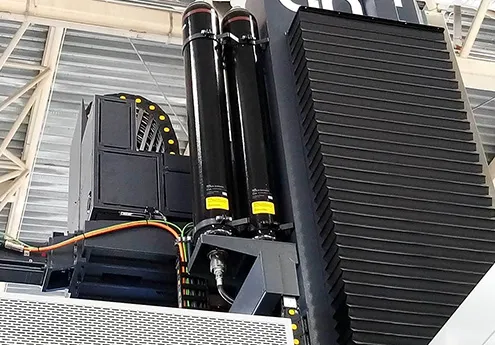flexible cable carrier chain
Flexible Cable Carrier Chain An Essential Component for Modern Machinery
In the fast-paced world of modern industrial machinery and automation, efficient cable management is crucial for maintaining operational efficiency and longevity of equipment. One key component that plays an indispensable role in this regard is the flexible cable carrier chain, often referred to simply as a cable carrier or dragging chain. This innovative solution is designed to protect and organize cables, hoses, and other utility lines in dynamic applications, where movement and flexibility are paramount.
The primary function of a flexible cable carrier chain is to provide a safe, organized pathway for cables that must move with machinery. This mobility is essential in applications such as robotics, CNC machines, and other automated systems, where movement is continuous and often multi-directional. Without a cable carrier, cables would be prone to wear and tear, leading to costly downtimes and potential safety hazards.
A cable carrier typically consists of a series of interconnected links that create a hollow channel, allowing cables to slide freely within the chain while being securely held in place. These chains can be made from a variety of materials, including plastic, steel, or aluminum, each offering different benefits depending on the specific industrial application. For instance, plastic carriers are lightweight and resistant to corrosion, making them ideal for environments with moisture or chemicals. On the other hand, steel carriers provide enhanced strength for heavy-duty applications where high loads are involved.
flexible cable carrier chain

One significant advantage of the flexible cable carrier chain is its modular design. Most cable carriers can be customized in terms of length, width, and even the number of inner compartments, allowing for tailored solutions that perfectly fit the unique requirements of each application. This flexibility also simplifies the installation process, making it easier for engineers to integrate cable carriers into existing systems.
Moreover, advancements in technology have led to the development of more sophisticated cable carrier systems equipped with features such as bend radius optimization and low-friction inner surfaces. These innovations help to minimize wear on cables, reducing maintenance needs and extending their lifespan.
Another important consideration is the routing of the cable carrier itself. Proper installation and management of the cable carrier are essential to prevent kinks and tangles, which can lead to electrical failures. Many manufacturers provide installation guides and tools that help to optimize the configuration and ensure that the cable carrier operates efficiently within the designated space.
In conclusion, the flexible cable carrier chain is a vital component that enhances the performance and reliability of modern machinery. By efficiently organizing and protecting cables in dynamic environments, these systems contribute to smoother operations, reduced maintenance costs, and increased safety in the workplace. As industries continue to evolve and embrace automation, the demand for effective cable management solutions like the flexible cable carrier chain will remain strong, making it an essential aspect of contemporary engineering and manufacturing practices.








